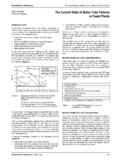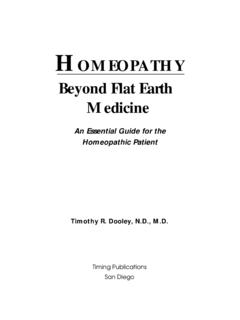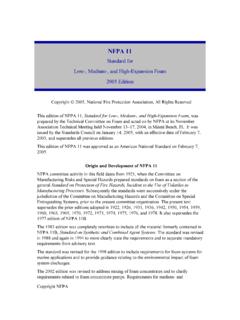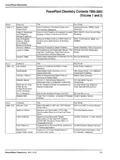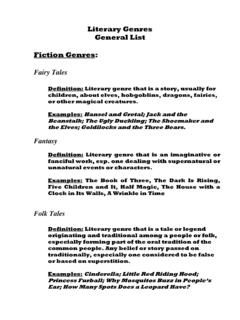Transcription of AD-A256 502 - Defense Technical Information Center
1 AD-A256 502. MTL TR 92-60 FAD - DESIGN OF THE M1 LIGHTWEIGHT. STEEL TOW BAR. CHRISTOPHER CAVALLARO, ROBERT B. dooley , and PAUL V. CAVALLARO. MECHANICS AND STRUCTURES BRANCH , --. ". SOCT 2 19i92. September 1992. Approved for public release; distribution unlimited. 92-27319 /. US ARMY. LABORATORY COMMAND ARMY MATERIALS TECHNOLOGY LABORATORY. msAi rAroOv Os Watertown, Massachusetts 02172-0001. The findings in this report are not to be construed as an official Oepartment of the Army position, unless so designated by other authorized documents. Mention of any trade names or manufacturers in this report siail not be construed as advertising nor as an officia indorsement or approval of such products or companies by the LI'ited States Government. 01 SPOSITION INSTRUCTIONS. Oestliv tniS reaort vwhtr orgntr . r- , -,). ( 0 met return t!
2 To tnt orilanaor UNCLASSIFIED. SECURITY CLASSIFICATION OF THIS PAGE (1heuin Data Entered). REPORT DOCUMENTATION PAGE READ INSTRUCTIONS. BEFORE COMPLETING FORM. I REPORT NUMBER 2. GOVT ACCESSION NO. 3. RECIPIENT*S CATALOG NUMBER. MTL TR 92-60. 4. TITLE (end Subtitle) S. TYPE OF REPORT 6 PERIOD COVERED. DESIGN OF THE Ml LIGHTWEIGHT STEEL TOW BAR Final Report . PERFORMING ORG. REPORT NUMBER. 7. AUTHOR(*) 6. CONTRACT OR GRANT NUMBER(s). Christopher Cavallaro, Robert B. dooley , and Paul V. Cavallaro 9- PERFORtMING ORGANIZATION NAME AND ADDRESS 10. PROGRAM ELEMENT. PROJECT. TASK. Army Materials Technology Laboratory AREA& WORK UNIT NUMBERS. Watertown, Massachusetts 02172-0001 D/A Project: IL26310D071. SLCMT-MRS. 11. CONTROLLING OFFICE NAME AND ADDRESS 12. REPORT DATE. Army Laboratory Command September 1992. 2800 Powder Mill Road 13.
3 NUMBER OF PAGES. Adelphi, Maryland 20783-1145 36. 14. MONITORING AGENCY NAME & ADDRESSlif different from Controlling Oflfes) IS. SECURITY CLASS. (ol this report). Unclassified IS. DECLASSIFICATION/DOWNGRADING. SCHEDULE. 16. DISTRIBUTION STATEMENT (.f this Report). Approved for public release; distribution unlimited. 17. DISTRIBUTION STATEMENT (of the abstract entered In Block 20. il different from Report). 18. SUPPLEMENTARY NOTES. 19 KEY WORDS (Continue on reverse sode of necessery and Identify by block number). Tanks 4340 Alloy steel Tow bars 4130 Alloy steel Lightweight steel Recovery 20. ABSTRACT (Continue an reverse *,do It necessary and Identify by block number). (SEE REVERSE SIDE). DD I 'JA,3 1473 EDITION OF ' NOV' ISSO3 SOLETE. S C UNCLASSIFIED. SECURITY CLASSIFICATION OF" THIS PAGE (Whoon Date Entered). UNCLASSIFIED.
4 SECURITV CLASSIFiCAtION Of THIS PAGE lIII Diat Ene-C'). Block No. 20. ABSTRACT. The increased weight of today's MIAl and MIA2 Main Battle Tanks has intro- duced a tow bar failure problem encountered only during field recovery operations. This problem is one of insufficient strength as the tow bar system currently used in the field was not designed for the recovery of these heavier vehicles. The direct result has been an increasing number of tow bar failures. In a joint program between the Army Tank-Autcmotive Command (TACOM), the Army Materials Technology Laboratory (MTL) and Foster Miller, Inc. (FMI), a new lightweight composite tow bar was developed. During the development of this new system, it becamp arp--rt - MTL that the cost of manuracturing and maLeLlals for this composite system would be relatively high when compared to the current steel tow bar system.
5 Accordingly, MTL developed a new lightweight tubular steel tow bar at the same time the composite tow bar program was coming to a close. The objective of this report is to address the design of this new steel tow bar system. It was constructed of a combination of 4130 and 4340 alloy steel and possesses several key advantages over the current system. These include a 307 increase in strength, a 23% weight reduction and interchangeable legs. In addition to these advantages, the cost of this new system when in production was estimated to be comparable to that of the current tow bar system. UNCLASSIFIED. $ECuUITY CLASSIFICATION OF TwIS PAGE ,(Wh fDWee. CONTENTS. Page INTRODUCTION .. I. DESIGN. Load Requirements .. I. Material Selection .. 2. Tube Selection .. 3. Lunette .. 5. Male End Fitting .. 5. Female End Fitting .. 6.)
6 Welds .. 7. Pins .. 7. CONCLUSIONS .. 8. REFERENCES .. 17. APPENDIX A, CALCULATIONS .. 19. APPENDIX B, ENGINEERING DRAWINGS .. 25. Iii INTRODUCTION. The increased weight of today's modified MIAl and MlA2 Main Battle Tanks presents a dilemma which is encountered during field recovery operations. The problem is the current tow bar system used in the field has become inadequate for the recovery of these heavier vehicles. This system (shown in Figure 1) was designed in the 1950's for use in the recovery of M60 battle tanks which weigh 58 tons. This tow bar system weighs 340 lbs and requires a minimum of four soldiers for installation. Its legs are constructed of SAE 4130 steel alloy tubing with the lunette fixed to one of the legs. With the weight of the modified MlAls and MIA2s approacbing 70 tons, the current tow bar system is experiencing a significanL.
7 Number of failures due to insufficient strength. In an effort to resolve this problem, the Army Tank- Automotive Command (TACOM), Army Materials Technology Laboratory (MTL), and Foster-Miller, Inc. (FMI) developed a new lightweight composite tow bar system. 1 However, during the development of this tow bar system, it became apparent to MTL. that the cost of manufacturing and materials for this new system (estimated to be 3 to 4 times the cost of the current system in production) would be too high relative to that of the currently fielded tow bar. As an alternative, MTL independently developed a new lightweight steel tow bar at the same time the composite tow bar program was coming to a close. 2 The goals of this effort were to develop a new system which was lighter, stronger, and reasonable in price compared to the current tow bar system.
8 DESIGN. Load Requirements The load requirements placed on the design of the new tow bar system were the same as those utilized in the development of the composite tow bar. A sequence of quasi-static load analyses were performed for various maneuvers and are summarized in Table 1. In this table, a straight tow refers to the recovery vehicle (M88A1 or MlAl) pulling the disabled vehicle straight forward or pushing straight backwards while the angled tow refers to the maneuvering through turns of both vehicles (see Figure 2). Also, elevation differential refers to one vehicle being above or below the other (see Figure 3). All loads shown in Table 1 are axial loads (quasi-static). There were no torsion and only a small magnitude of bending loads 3 applied to the tow bar because all tank to tow bar connections act as universal joints allowing for rotation (see 1.)
9 Figure 4). The bending load applied was due to friction between the lunette and pintle during towing (see Figure 5). In addition to the quasi-static analysis, the dynamic analysis showed a 54 ton steady-state force acting on the tow bar during a 40 mph tow on level terrain conditions. This estimate was based on existing field test data from the current tow bar system. 3 With a dynamic magnification factor of for impulse conditions, 1 maximum dynamic loads were estimated at approximately 108 tons. Table 1. QUASI-STATIC LOAD ANALYSIS SUMMARY. Maximum Tow Bar Leg Load Maneuver Tension/Compression Level Terrain, Straight Tow 34/-44 tons Level Terrain, Angled Tow 76/-98. Sloped Terrain (30% grade), Straight Tow 43/-54. Sloped Terrain (30% grade), Angled Tow 95/-120. Stationary Turn 33/-33. Elevation Differential, Straight Tow 52/-48.
10 Elevation Differential, Angled Tow 115/-108. From the Information tabulated in Table 1, the maximum load experienced by the tow bar was 115 tons in tension and 120 tons in compression. By using the worst case load of 120 tons and introducing a factor of safety of , the design load for each leg of the tow bar was 180 tons, axial tension or compression. This 180 tons represented the maximum load each individual leg was to sustain before material began to yield. Material Selection All components of the currently fielded tow bar, including the tubular legs, are constructed of SAE 4130 alloy steel. In the new design, this alloy was used only for the tube material due to its strength, toughness, and heat treatability. A nominal heat treatment would generate the 150 ksi ultimate strength and 122 ksi yield strength, ayl, which were necessary to provide the strength required to endure the severe tow bar service environment.











